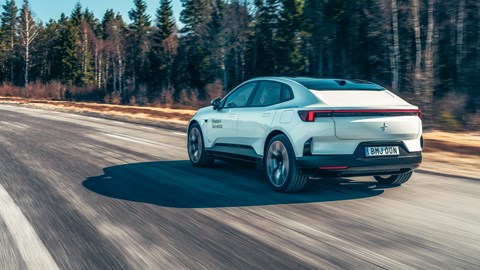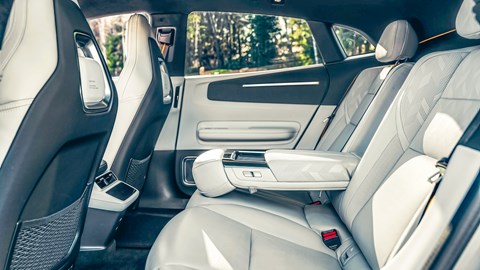► Polestar 4’s digital rear-view mirror tested
► Uses feed from a 2.5MP camera
► Does it make sense?
It is Ferrari design boss Flavio Manzoni’s fervent belief that great design doesn’t mean steamrollering engineering challenges in the name of style. Instead, he says, designers should understand the thinking behind the engineering and see the demands it places on the car’s exterior form as inspiration, not a limitation.
Clearly, though, there’s a third way – use technology to square the circle. When it came to the Polestar 4, the brand’s iPace-style coupe/ crossover, head of design Max Missoni wanted a coupe roofline on a package that, thanks to its underfloor battery and rear-passenger headroom requirements, really didn’t lend itself to the idea.

The answer was to move the header rail, a key part of the car’s structure, rearward, behind second-row heads rather than above them. Doing so creates decent headroom beneath a sexy, supersonic roofline. A reclined seating position also does its bit.
Does the theory extend to real life? It does, and in some style. Climb into the back and the 4’s second row is roomy in the extreme (as you’d hope given the 2999mm wheelbase and 4.84m overall length). Headroom is generous and the interior design quirky but gorgeous, with a neat wing motif that runs around the back of the rear seats, mirroring the same idea around the two people up front, making you feel snug and safe and happy.

The vast panoramic roof can be optioned with electro-chromatic glass and, despite the lack of natural light from behind, there’s no sense of claustrophobia thanks to gentle ambient lighting. Colour themes, inspired by the planets of the solar system, are nicely presented on the screen, complete with Polestar-show-car-in-space animation.
But of course no rear glass means a normal mirror is good only for checking one of your children hasn’t painted the other one blue with a handy felt pen. Hence the digital rear-view mirror. These aren’t a new idea (the second-gen Evoque featured the same) but of course in the 4 you have no option but to use it. The mirror uses a feed from a 2.5MP camera high on the trailing edge of the roof, and features a far wider field of vision than a mirror, so that its image overlaps generously with what you see in the actual glass of the side mirrors.

Does it work?
Yes. Although something about glancing at a screen after decades of mirrors takes some acclimatisation. That said, it’s a far less demanding shift than, say, camera side mirrors.